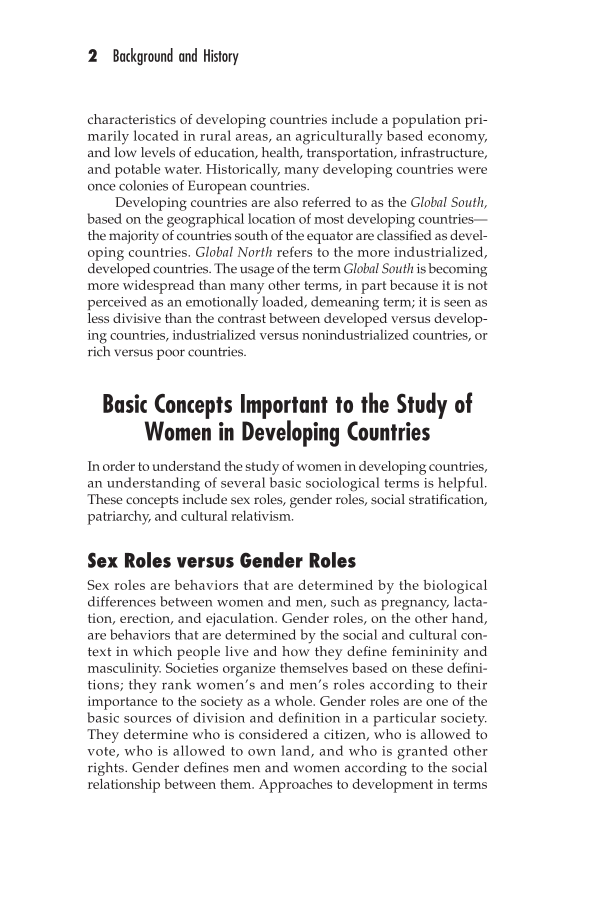characteristics of developing countries include a population pri- marily located in rural areas, an agriculturally based economy, and low levels of education, health, transportation, infrastructure, and potable water. Historically, many developing countries were once colonies of European countries. Developing countries are also referred to as the Global South, based on the geographical location of most developing countries— the majority of countries south of the equator are classified as devel- oping countries. Global North refers to the more industrialized, developed countries. The usage of the term Global South is becoming more widespread than many other terms, in part because it is not perceived as an emotionally loaded, demeaning term it is seen as less divisive than the contrast between developed versus develop- ing countries, industrialized versus nonindustrialized countries, or rich versus poor countries. Basic Concepts Important to the Study of Women in Developing Countries In order to understand the study of women in developing countries, an understanding of several basic sociological terms is helpful. These concepts include sex roles, gender roles, social stratification, patriarchy, and cultural relativism. Sex Roles versus Gender Roles Sex roles are behaviors that are determined by the biological differences between women and men, such as pregnancy, lacta- tion, erection, and ejaculation. Gender roles, on the other hand, are behaviors that are determined by the social and cultural con- text in which people live and how they define femininity and masculinity. Societies organize themselves based on these defini- tions they rank women’s and men’s roles according to their importance to the society as a whole. Gender roles are one of the basic sources of division and definition in a particular society. They determine who is considered a citizen, who is allowed to vote, who is allowed to own land, and who is granted other rights. Gender defines men and women according to the social relationship between them. Approaches to development in terms 2 Background and History
Document Details My Account Print multiple pages
Print
You have printed 0 times in the last 24 hours.
Your print count will reset on at .
You may print 0 more time(s) before then.
You may print a maximum of 0 pages at a time.


















































































































































































































































































































































































